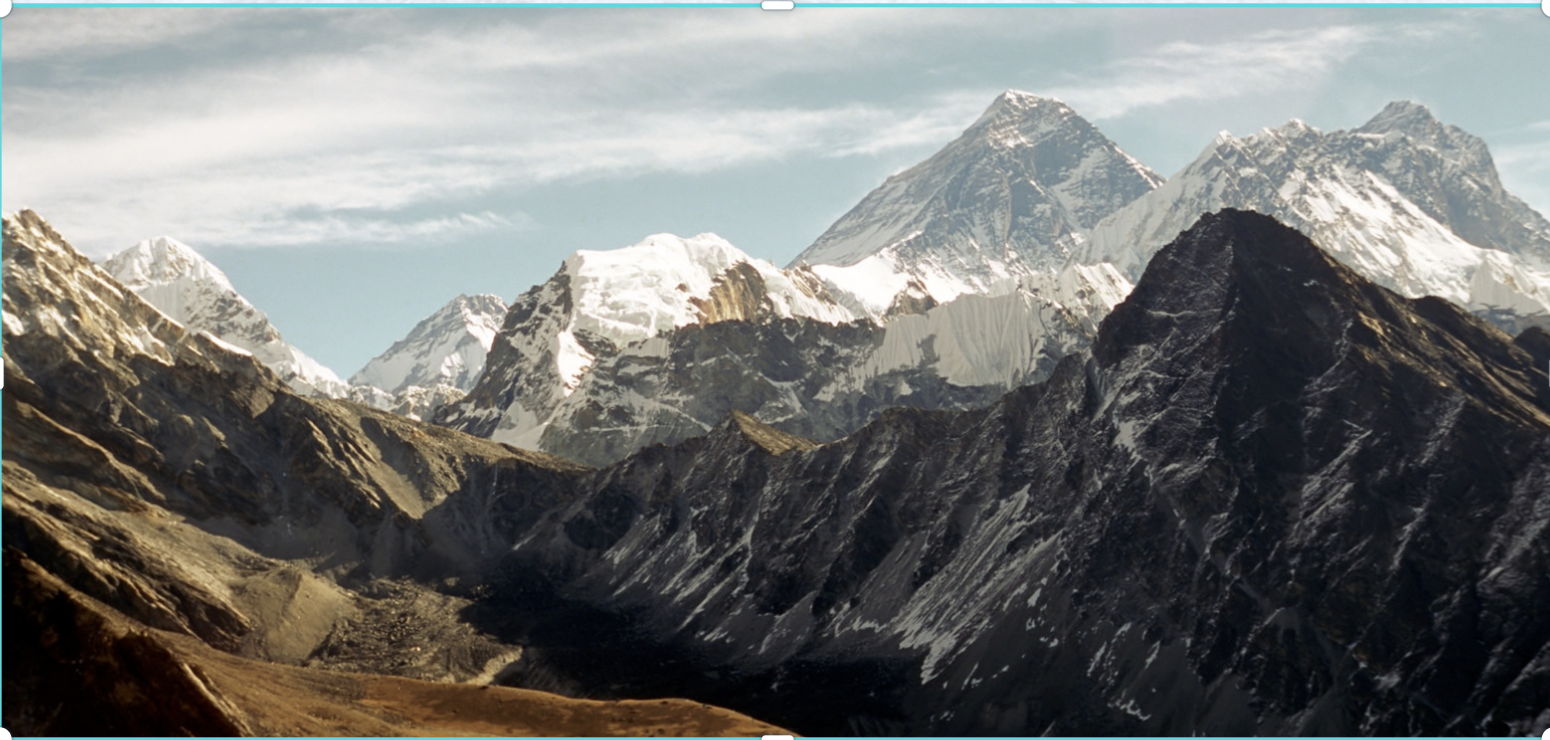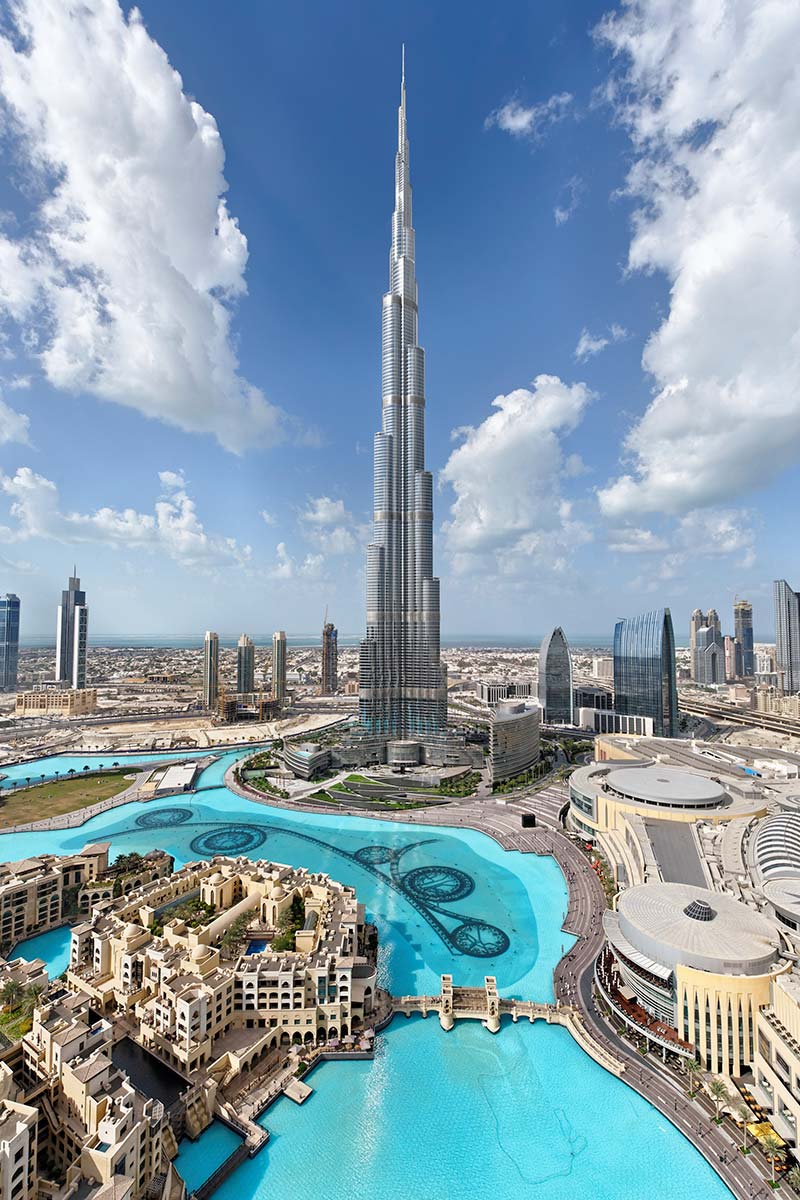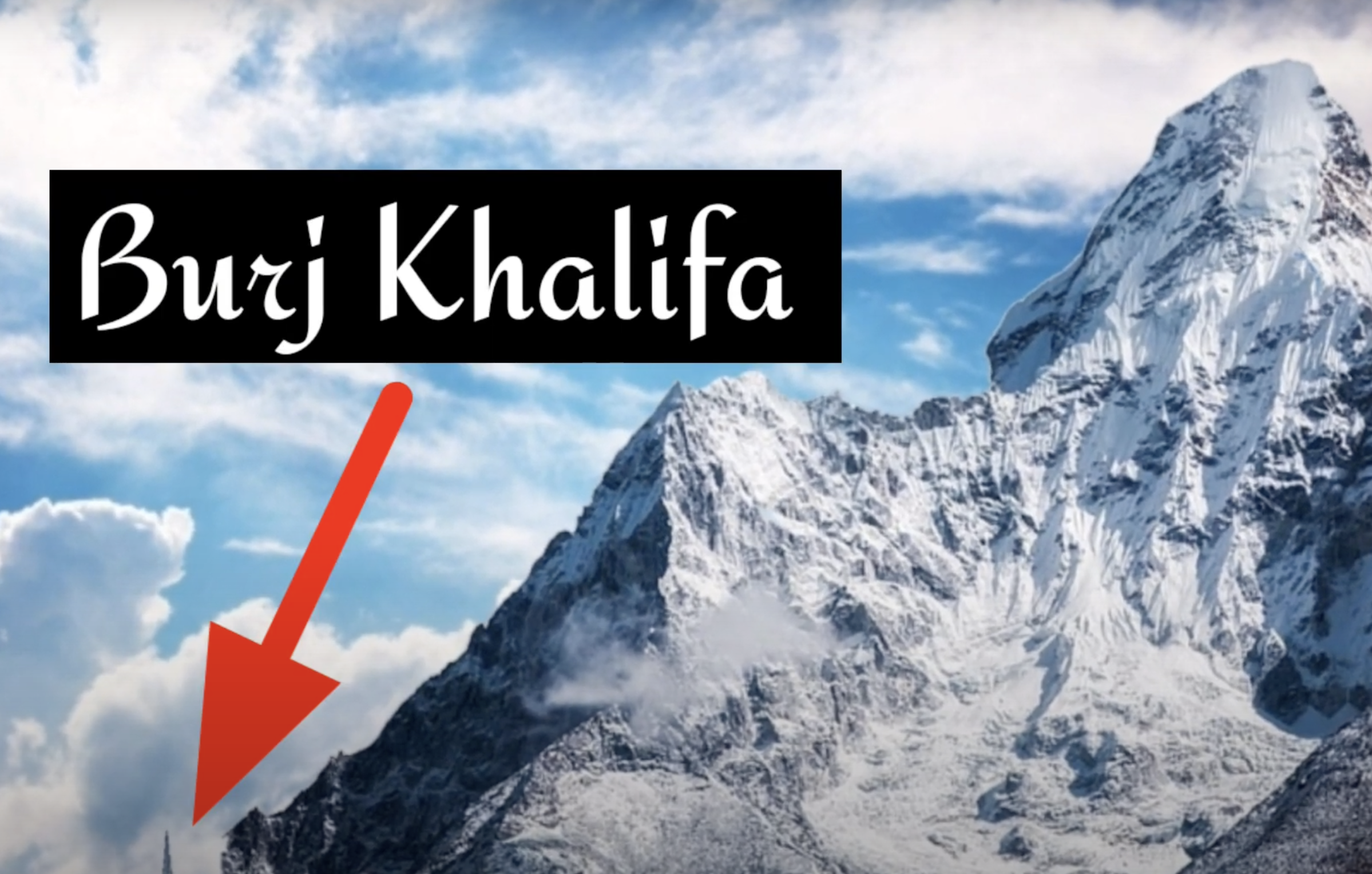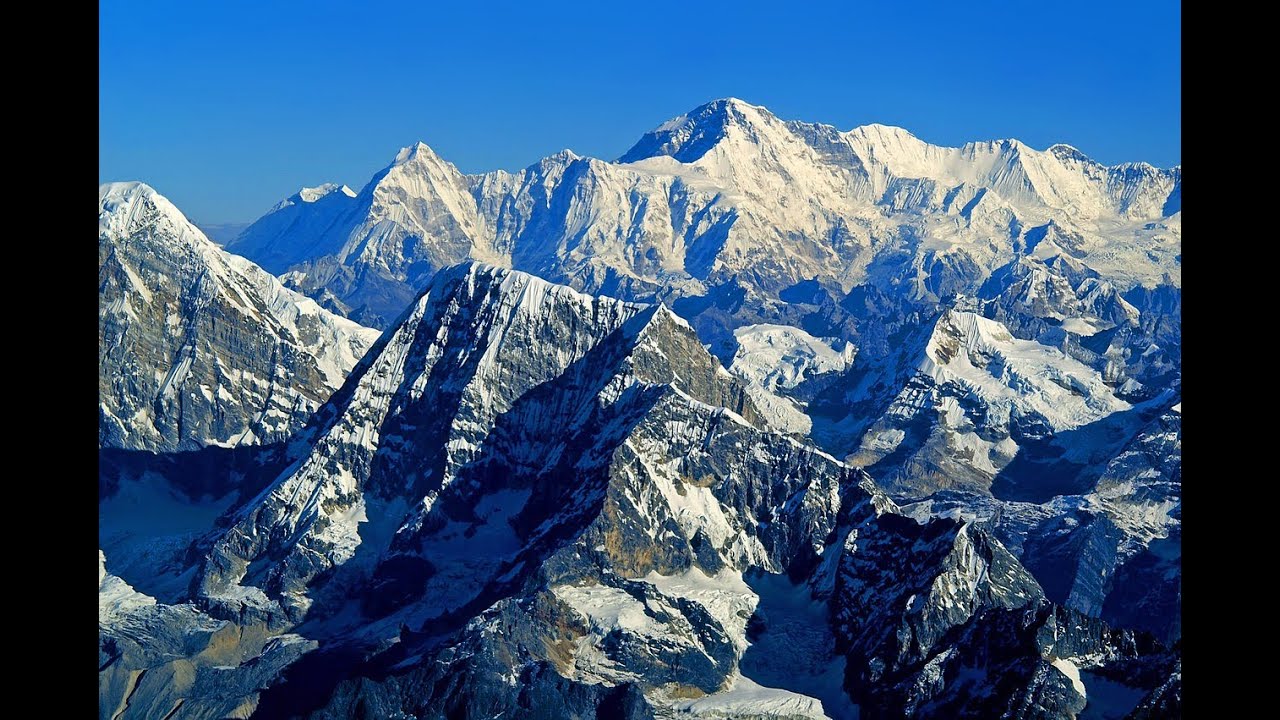While waiting in the queue to check-in my luggage at the airline counter, I heard a young boy say “Burj Khalifa is not the tallest building- it’s Mount Everest!”. Although his expression was true, Burj Khalifa is a man-made tower while Mount Everest is a divine gift. Did you know that Mount Everest was not known to the western world until 1852? Did you know that it is about 60 million years old? Let’s look at Mount Everest from the 5D approach.
Mount Everest was originally called ‘Sagarmatha’ by the Nepalis and ‘Chomolungma’ by the Tibetans. In terms of its geological formation, Mount Everest is composed of three distinct rock formations. From the mountain base to the summit, they are: the Rongbuk Formation; the North Col Formation; and the Qomolangma Formation. These rock units are separated by low-angle faults, forcing each one over the next in a zigzag pattern. It is 8,848 meters tall above sea level, and it grows by about 0.25 inches each year. That is because it sits on the intersection of the Indian and Eurasian tectonic plates which collide against each other (very slowly), and push the tallest mountains in the world upwards at 1/25 or 1/3 of an inch per year.

In comparison, the tallest man-made building so far -Burj Khalifa- is 829.8 meters in height, and its construction took about nine years. Mount Everest, on the other hand, is 8,849 meters tall and its formation took more than 60 million years. Imagine the different civilizations that came across this mountain! Moreover, Burj Khalifa’s primary structure is made of reinforced concrete and structural steel while Mount Everest is made of different types and combinations of rock formations. In terms of area, Mount Everest alone is 1,243 km², and in total with the series of Himalayan mountains, it is 595,000 km². However, Burj Khalifa is only 2 km² wide since the main aim of its construction was to have the tallest building in the world, not the widest.
Can you see any resemblance between the man-made tallest building and the tallest mountain? Which do you think is more sophisticated and elegant? Is it possible for humans to build a taller mountain than Mount Everest?

It seems like humans have always wanted to be close to the sky. If we look at the timeline of the human endeavor to build the “tallest building” we can see that the quest began before the 7th century with the Pantheon in Rome, followed by Hagia Sophia and several other buildings. The trend followed during the Middle Ages. Some examples would be the Hwangnyong Temple in South Korea, the Koutoubia Mosque in Morocco, the Old St. Paul’s Cathedral in London (destroyed during the great fire of London in 1666) and many others. As of the 19th century, New York was outstanding in terms of its skyscrapers such as the Empire State Building and the World Trade Center. Soon after that, Chicago’s Sears Tower came into the picture followed by the Petronas Towers in Kuala Lumpur, and finally the tallest building so far, the Burj Khalifa. Let us pause for a moment, and admire the beauty of the Burj Khalifa. How was it built? How many engineers and labor forces came together to develop such a project?
Burj Khalifa was built for several reasons, among them is a shift from an oil-based economy to one more service and tourism-based. Do you think steel and concrete alone would have come together to benefit humanity? Do you think the raw materials of the building were blown together by the wind and suddenly the tallest building came to be? How about the tower's location? What about its residential floor and other facilities? Clearly, there must have been exhaustive research and investigation before executing such a project. In fact, the engineers involved in this building have extensive previous experience with building skyscrapers elsewhere in the world. Do you think the Y design of the tower came to be from the thoughts of the atoms and molecules of steel and glass? The design, in fact, was derived from the Islamic architecture of the region, such as the Great Mosque of Samarra. The structure also features a cladding system designed to withstand the UAE's hot summer temperatures. It is comprised of reflective glazing with aluminum and textured stainless steel spandrel panels and stainless steel vertical tubular fins. When speaking of how Mount Everest came to be, it was a result of a tectonic smashup between the Indian and Eurasian tectonic plates tens of millions of years ago. Before the collision, the ocean crust at the Indian plate's edge plunged under the Eurasian plate, scraping seabed sediments and rocks into a pile. Such tectonic activity beneath the ocean floor can also become ocean vents.

It is an undeniable fact that the development of the skyscrapers would not have been possible without the will, effort, and knowledge of many people over many years. Since the mountains’ structure and formation is much more complicated and elegant than any comparable man-made building, it must require an even higher level of knowledge and power along with a persistent will.
Since we concluded that it takes will and power to create mountains, then there must be an All-Knowing, All-powerful Creator behind the majestic mountains. In fact, all mountains speak of their Creator.
Let's take the Himalayas range. In this case, the series of mountains is the outcome of a series of delicate, interconnected events at both the macro and micro levels. Second, plants, animals, and human beings all rely on the existence of mountains for they act as piles that hold the earth together and stabilize its gravitational stress. Moreover, they also supply critical resources such as fresh water, food, and even renewable energy.
On the micro-level, since the Himalayas are of the “Fold mountains” type, they are formed when two or more of Earth's tectonic plates are pushed together. At these colliding, compressing boundaries, rocks and debris are warped and folded into rocky outcrops, hills, mountains, and entire mountain ranges. If it was only up to these unconscious, ignorant, compartments, mountains wouldn’t have come to be. At the macro level, we can see that mountains function through the cooperative work of tectonic plates, the oceans, the surrounding land, and the force of gravity. Thus, we can conclude that The One who Created earth with its tectonic plates that play an essential role in the formation of rocks, must be the one who created the sun- the apparent reason for Earth to exist in addition to the Solar System, the trillions of stars and the entire universe.
Now, what would happen if we had no mountains? Can we as humans build them? Would we know exactly where to locate them? Would mountains build themselves on their own? The provision of the Mountains allows us to survive on planet Earth. The sophisticated mechanism behind mountains’ s formation is beyond what humans can conceive or build.

The functional importance of mountains, specifically the Himalayas, are manifested through a mountain's ability to protect people who live near it from the cold and dry winds of Central Asia. Also, through mountains, monsoon winds of the Indian Ocean are prevented from crossing over to Northern countries and cause heavy rainfall in Northern India. Moreover, when the snow melts off the mountains during summer, it provides water to the rivers even during dry seasons. These rivers carry enormous quantities of aluminum and thus make the land a fertile one. Also, The Himalayan region offers several sites which can be used for producing hydroelectricity. Many minerals as well like copper, lead, zinc, nickel, cobalt, gold, silver, limestone, semi-precious and precious stones can be found in the Himalayas range.
Indeed, mountains are essential elements of life. They are an extremely valuable gift that fulfills the needs of living beings in order to survive. The True Bestower of Bounties wants in return for the precious gift of the Mountain three things: one is remembrance, another is reflection, and the third is gratitude. We should realize that there is a Creator of the Mountains, contemplate the priceless, miraculous Mountains as a gift of our Creator's mercy and wisdom, and be thankful to the Creator for granting us Mountains that provide us with numerous benefits.
We should learn to be humble. We should work on our higher self and elevate our morals. From the way mountains stabilize Earth, we should learn how to balance our spiritual state of mind.
Now that we have reflected on the gift of mountains, let us keep in mind that when planning to climb one next time, we should not leave waste behind us up there. See you at the peak!